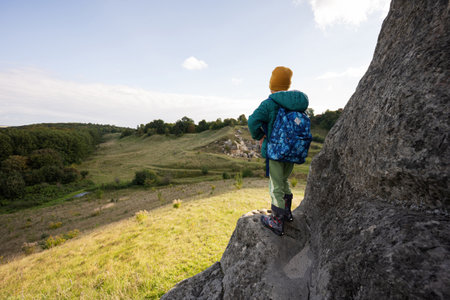Introduction: The British Passion for Walking
Walking holds a distinctive place in British culture, woven into the very fabric of everyday life and national identity. From the rolling hills of the Lake District to the dramatic cliffs along the Jurassic Coast, Britain’s diverse and often breathtaking landscapes have long inspired both solitary wanderers and organised groups alike. The tradition of walking is not merely a pastime but a way of connecting with history, nature, and community. Over generations, footpaths—many dating back centuries—have crisscrossed rural fields, ancient woodlands, and rugged moors, offering countless opportunities for exploration. The right to roam, fiercely protected and celebrated in Britain, reflects a collective appreciation for access to open spaces. This deep-rooted passion for walking has laid the foundation for an enduring tradition of walking clubs, which have evolved over time from informal gatherings of ramblers to today’s thriving hiking societies. These groups are not only about physical exercise; they serve as social hubs, platforms for activism, and guardians of public pathways. Understanding how these clubs came to be offers valuable insight into the evolving relationship between people and landscape in Britain.
2. The Origins of Rambling and Early Walking Clubs
To understand the contemporary landscape of British walking societies, it is essential to explore their roots in the practice known as “rambling.” Rambling, as a term, first gained traction during the 19th century, reflecting a growing public interest in exploring the countryside on foot. This cultural movement did not arise in isolation; rather, it was a response to increasing urbanisation and industrialisation, which saw vast swathes of the population seeking respite from cramped city living.
The earliest walking clubs emerged as informal gatherings of like-minded individuals who wished to escape to the countryside for health, leisure, and camaraderie. These early groups often had specific aims: some advocated for access rights to footpaths and open land, while others focused on socialising or natural history. Over time, these purposes began to overlap and reinforce one another.
Key Milestones in Early Walking Club Formation
| Year | Club Name | Main Purpose | Notable Contribution |
|---|---|---|---|
| 1824 | The Wordsworth Society (proto-walking group) | Literary appreciation & countryside walks | Encouraged romantic exploration of Lake District paths |
| 1877 | The Sunday Tramps | Social rambling & recreation | Pioneered weekend group walks around London outskirts |
| 1905 | The Clarion Ramblers | Access rights advocacy & social reform | Instrumental in the campaign for public access to moorlands |
The Social and Political Contexts of Early Rambling
The initial ethos behind these clubs was more than mere enjoyment of scenery. Walking became intertwined with broader social movements — especially those advocating for workers’ rights and equitable access to green spaces. The working classes, in particular, saw walking as both a form of protest and a path to well-being. This spirit culminated in landmark events such as the 1932 Kinder Scout Mass Trespass, where ramblers asserted their right to roam on private land—an act that would have lasting legal and cultural implications.
Summary: Laying Foundations for Future Societies
The historical evolution of British walking clubs reflects a dynamic interplay between leisure, health, social justice, and collective identity. These early organisations laid the groundwork for today’s structured hiking societies by formalising traditions of weekly walks, championing public access, and fostering an enduring appreciation for Britain’s diverse landscapes.

3. The Ramblers’ Association and the Fight for Access
The formation of the Ramblers’ Association in 1935 marked a turning point in the history of British walking clubs, crystallising decades of grassroots campaigning into a unified national movement. At its heart, the Association was driven by a singular mission: to secure public access to the countryside for all, regardless of social standing. This ambition reflected a deeply held belief that walking was not merely recreational, but a fundamental right entwined with British identity and landscape.
One of the defining moments for both the Ramblers’ Association and the wider access movement was the Kinder Scout trespass of 1932. Although it predated the Association’s formal founding, this mass protest on Derbyshire’s moorland became emblematic of the struggle for walkers’ rights. Hundreds of ramblers defied landowner restrictions, risking arrest to assert their claim to ancient footpaths across privately owned land. The event galvanised public opinion and set a precedent for civil disobedience in pursuit of open access.
Throughout the mid-20th century, the Ramblers’ Association campaigned tirelessly for legal recognition of public rights of way. Their efforts were instrumental in shaping landmark legislation such as the National Parks and Access to the Countryside Act 1949, which led to the creation of definitive maps and protected thousands of miles of footpaths. These achievements were hard-won, often requiring meticulous documentation, local advocacy, and negotiations with landowners and authorities.
The legacy of these campaigns is visible today in Britain’s extensive network of public footpaths, bridleways, and open access lands. The Ramblers’ Association not only ensured legal protections but also fostered a sense of stewardship among walkers—encouraging responsible use and conservation of cherished landscapes. In many ways, their fight for access laid the groundwork for the inclusive ethos that characterises contemporary hiking societies across the UK.
4. Cultural Shifts: Walking as Social and Political Expression
Throughout the twentieth and twenty-first centuries, British walking clubs evolved beyond their original recreational purpose, becoming dynamic spaces for social interaction and political activism. These clubs mirrored changing social values, forging a sense of community while also offering a platform to address broader societal issues. The transformation from simple rambling groups to multifaceted hiking societies reflected the shifting priorities and challenges of each era.
Community Building and Inclusion
Initially, walking clubs primarily attracted a certain demographic—often working-class individuals seeking respite from industrial life. Over time, these groups expanded their reach, welcoming members regardless of age, gender, or background. This inclusivity fostered stronger community bonds and provided a rare opportunity for people from diverse walks of life to interact on equal footing. As British society became more conscious of equality and diversity, walking clubs responded by actively promoting accessible routes and encouraging participation from underrepresented groups.
Social Expression and Identity
Walking together in the countryside was not merely an act of leisure but became a statement about identity and values. Members expressed solidarity with movements advocating for public access to land, environmental stewardship, and preservation of rural heritage. Walking clubs often served as safe spaces where individuals could discuss contemporary issues away from urban pressures. In this way, rambling became a subtle yet powerful means of expressing collective aspirations for fairness, sustainability, and well-being.
Political Engagement and Activism
Perhaps most notably, walking clubs played a key role in political movements surrounding land rights. From the historic Kinder Scout Mass Trespass in 1932 to modern campaigns for countryside access, walkers were at the forefront of efforts to open up private estates for public enjoyment. These actions helped catalyse legislative changes such as the Countryside and Rights of Way Act 2000. The table below summarises how walking clubs have reflected cultural shifts over time:
| Era | Main Social Value | Club Activities | Political Impact |
|---|---|---|---|
| Early 20th Century | Escape & Fellowship | Organised rambles; informal gatherings | Increased social mobility; early advocacy for access rights |
| Mid-20th Century | Equality & Solidarity | Larger group hikes; support for mass trespasses | Kinder Scout protest; influence on land reform debates |
| Late 20th – Present Day | Diversity & Environmentalism | Inclusive events; environmental campaigns; heritage walks | Contribution to Access Acts; greater inclusion in outdoor culture |
Conclusion: Ongoing Evolution
Today’s hiking societies continue this legacy of blending recreation with meaningful engagement in social and political issues. Whether championing green corridors through cities or supporting mental health through nature walks, walking clubs remain vital hubs for community empowerment and cultural change.
5. Modern Hiking Societies: Diversity, Technology, and New Traditions
In recent years, British hiking societies have undergone a remarkable transformation, reflecting the broader social changes across the UK. Today’s groups are markedly more diverse and inclusive than their predecessors, with many organisations making a concerted effort to welcome individuals from all backgrounds, abilities, and age groups.
Inclusivity at the Forefront
One of the most striking developments is the proactive approach towards inclusivity. Many modern walking clubs now offer specialised events for families, young people, LGBTQ+ communities, and walkers with disabilities. This shift has contributed to a vibrant mix of participants on British footpaths, breaking down traditional barriers and ensuring that walking remains an accessible pastime for all. The Ramblers’ “Walking for Health” initiative and Black Girls Hike are prime examples of efforts aimed at expanding access to the countryside.
The Digital Revolution in Walking
Technology has also played a pivotal role in reshaping how hiking societies operate. Online platforms like Meetup and Facebook groups enable walkers to connect instantly and plan outings with ease. GPS tracking apps such as OS Maps or Komoot allow members to share routes and record their journeys, while digital forums provide spaces for sharing advice and fostering community spirit beyond the trails. This digital integration has made it easier for newcomers to join in and for longstanding members to stay engaged.
Changing Demographics
The demographic profile of British hikers is evolving as well. While older generations remain active, there is a growing presence of younger people drawn by the mental health benefits of walking and a renewed appreciation for local landscapes following recent national lockdowns. Walking clubs now frequently promote events via social media to attract new members, reflecting changing communication preferences and lifestyles.
New Traditions and Continuing Legacy
Modern hiking societies have not only adapted but also innovated. From themed walks—such as historical trails or nature rambles—to environmentally focused litter picks, new traditions are forming alongside established practices. In this way, today’s British walking groups continue the legacy of their forebears while embracing the values and technologies of contemporary society.
6. The Enduring Legacy and Future of British Walking Clubs
Today, walking clubs continue to play a vital role in British society, championing both heritage and wellbeing. These groups are not just about rambling through the countryside; they foster community spirit, support mental and physical health, and advocate for the protection of the UK’s footpaths and green spaces. As more people seek respite from digital overload and urban life, the appeal of organised walks, whether a gentle Sunday stroll or a challenging hike across moorland, has only grown stronger.
The Role of Walking Clubs in Contemporary Britain
Modern walking clubs serve as custodians of tradition while adapting to current needs. They create inclusive environments where members can connect regardless of age or background, championing accessibility and diversity. Many clubs actively campaign for public rights of way and collaborate with conservation groups to ensure these precious routes remain open for future generations. Furthermore, they offer structured opportunities for social interaction—something increasingly valuable in an age where loneliness is a growing concern.
Ongoing Challenges
Despite their strengths, British walking clubs face notable challenges. Changing leisure habits, competition from individual outdoor pursuits apps, and fluctuating volunteer numbers can threaten club sustainability. Additionally, maintaining and defending public access to traditional footpaths requires persistent lobbying against encroachment by development or changes in land use. The need to attract younger members is particularly pressing; without generational renewal, there is a risk that some clubs may dwindle over time.
The Outlook: Tradition Meets Innovation
The future of British walking clubs lies in balancing respect for established traditions with creative engagement strategies. Embracing digital tools—such as online meetups, route planning apps, and social media—can make clubs more accessible to newcomers. Partnerships with schools, local authorities, and environmental organisations also promise fresh opportunities for outreach. If these societies continue evolving while staying true to their roots—championing access, wellbeing, and camaraderie—the legacy of British walking will remain robust for decades to come.


